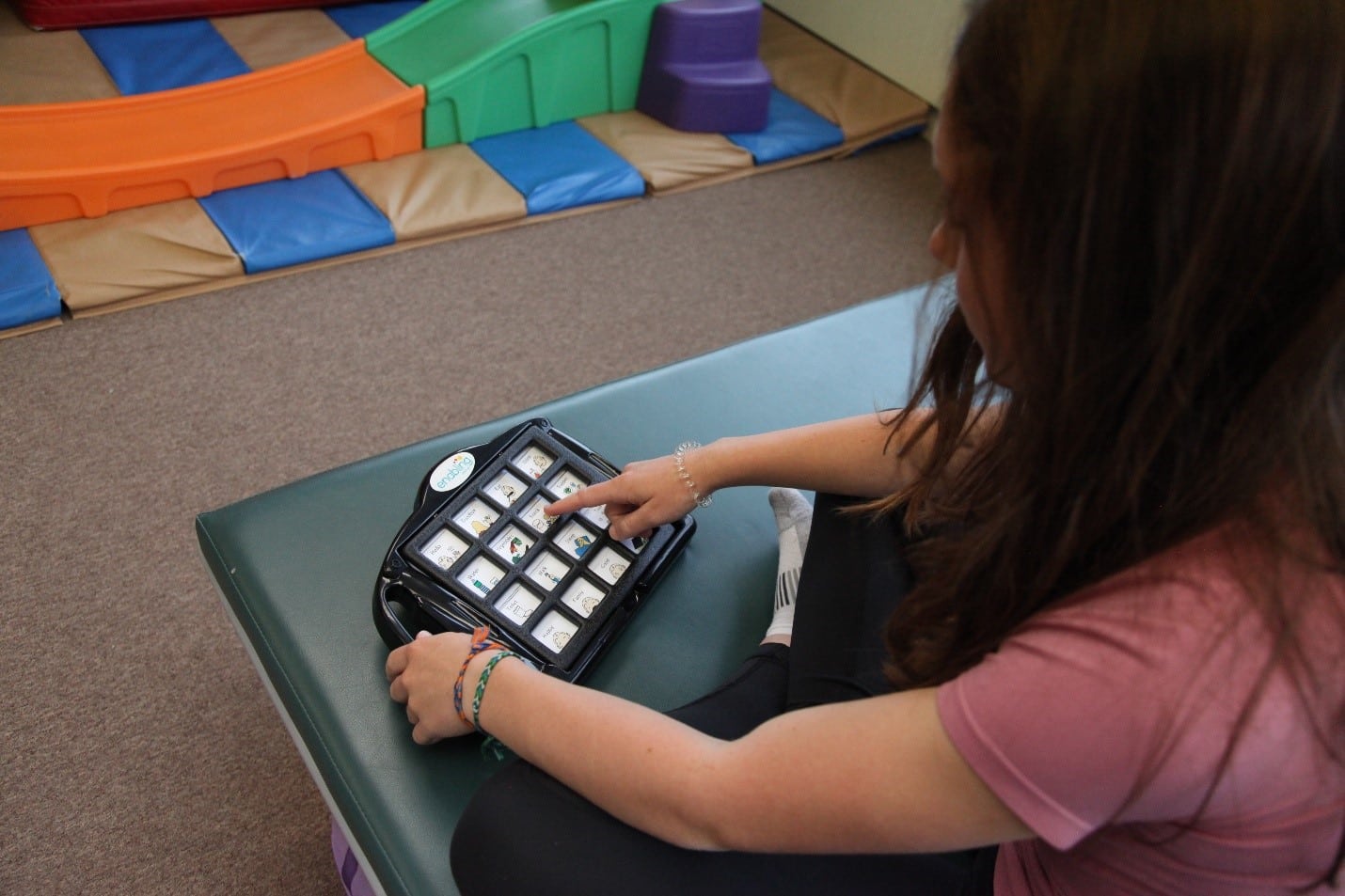By Erin Birmingham
Special Education Teacher at Southwest Cook County Cooperative Association for Special Education
Individuals with disabilities communicate in a variety of ways: vocalizations, facial expressions, gestures, eye gaze, body language, touch, verbalizations and more. Family members are often the translators for their son, daughter, sister or brother. Most parents can tell what their child needs just by looking at them.
When the “translator” isn’t present, though, it can be hard for the child to make themselves understood. School, day programs, special recreation centers, residential living facilities, and anywhere in the community are challenging places for your loved one to communicate their wants and needs. That results in a lot of frustration.
So, how can we make communication easier for everyone?
Families of a person with a disability can work with a speech-language pathologist to find the right AAC device for your child. There are low-tech options like communication boards, communication books and visual pictures. Mid-tech tools, like Enabling Devices’ Talkables line of communicators, use recorded speech to give a voice to the individual. And there are high-tech tools like iPads with communication apps. A speech-language pathologist will work with you and your child to trial a variety of communication tools before making a recommendation.
After making a recommendation, a speech-language pathologist will train the individual and their family members how to navigate the communication tool. This is the most crucial part to make communication with your individual with a disability successful! It takes time and patience but all the effort will pay off.
Now that everyone has been trained, it’s time to take that communication tool on the road–literally! Bring it everywhere! Create opportunities for your child to communicate with the world around them. These opportunities could include ordering at a restaurant, shopping at the grocery store, greeting neighbors and store cashiers and conversing with friends.
There are lots of opportunities for the communication tool to be used at home as well. Playing games as a family, choosing what to have for dinner, telling jokes, are just some examples. Feeling overwhelmed? You can start with simple “yes” and “no” questions. Modeling is also a great strategy for family members to show their child where words and phrases are located. It is also critical that your child gets an opportunity to explore their communication tool on their own. You may be surprised what comments and questions they have!
Parents sometimes wonder if introducing a communication tool will stop their child from talking. Rest assured that the communication tool will not replace any language a child has already developed. Research has shown that communication tools actually expand their vocabulary and encourage them to communicate more.
And that’s what every parent wants–a way their child can communicate their wants and needs in the world outside their home. By providing your child with the right AAC device, you’re equipping them with the means to participate in the wider world.


